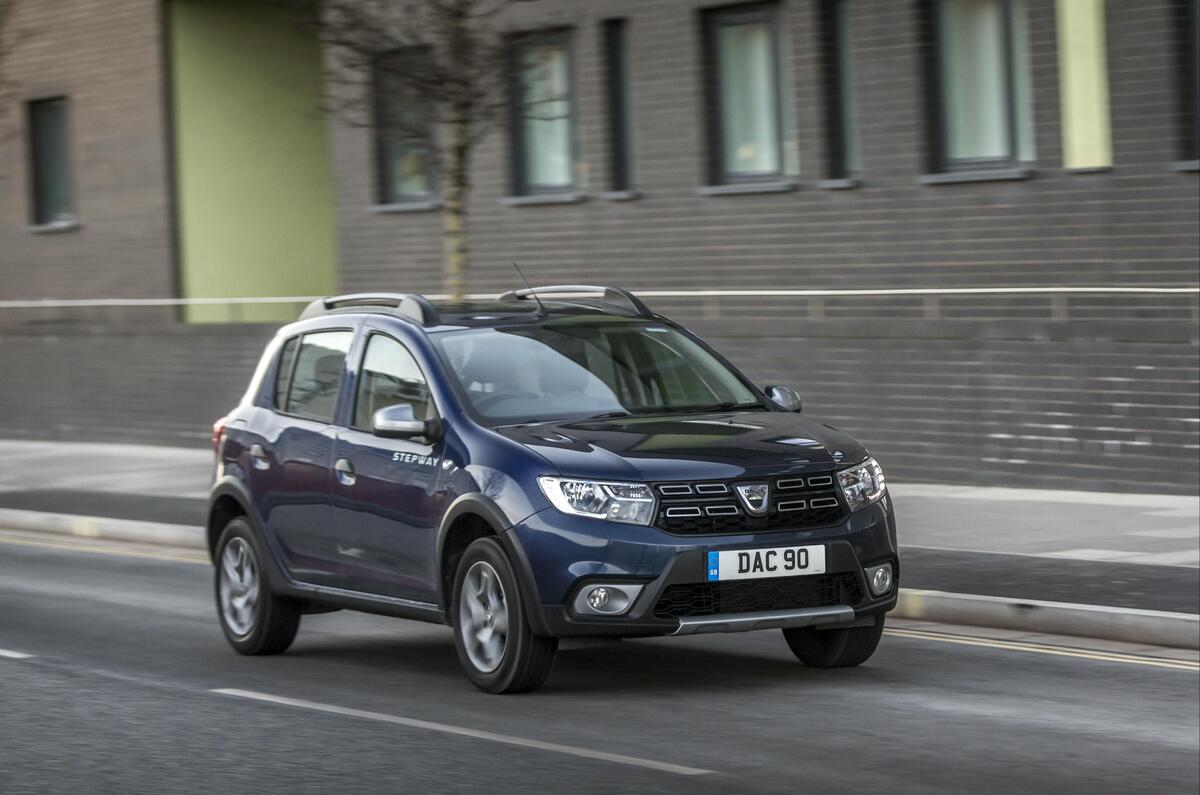The Dacia Sandero Stepway is all about ‘more for less’. Although a crossover by name, this jacked-up Dacia supermini stops short of the additional complication and expense of four-driven wheels.
What it does offer, relative to the standard Sandero on which it’s based, is ruggedised 4x4 styling, 40mm of additional ground clearance and a dose of extra standard equipment, all for little extra outlay. It’s the kind of niche segment derivative that could end up out-selling its mainstream equivalent. And for 2017, the Dacia Sandero has given the exterior a light facelift and its equipment levels a boost.
You can count the ways in which this car differs from that equivalent on the fingers of one hand, and mostly from the far end of the car park. Plastic wheelarch extensions? Check. New bumpers with faux underbody protection plates? Check. Roof bars? Present.
Differences on the inside are few and far between, besides some rubber floor mats and slightly different seat trims. The most important difference here is that, because the Dacia Sandero Stepway rides farther off the ground than the Sandero, consequently it’s easier to slide in and out of.
What isn’t so obvious is that, on top of all that, is what the two trim levels contain as standard. Both Sandero Stepways include 16in alloy wheels, stop-start technology, LED day-running-lights, skid plates and tinted rear windows as standard on the outside, while inside there is numerous satin chrome touches and a 12-volt socket.









































